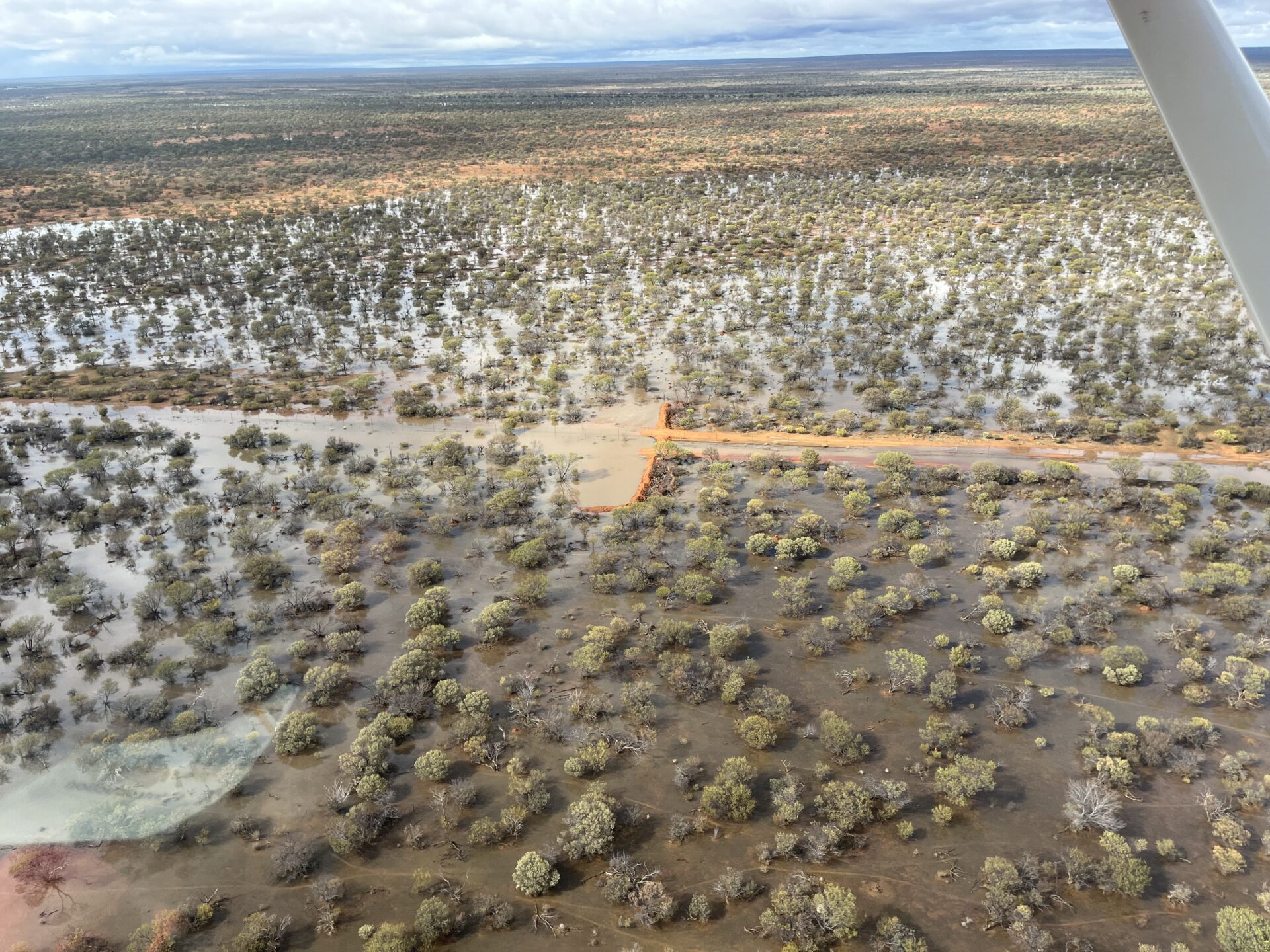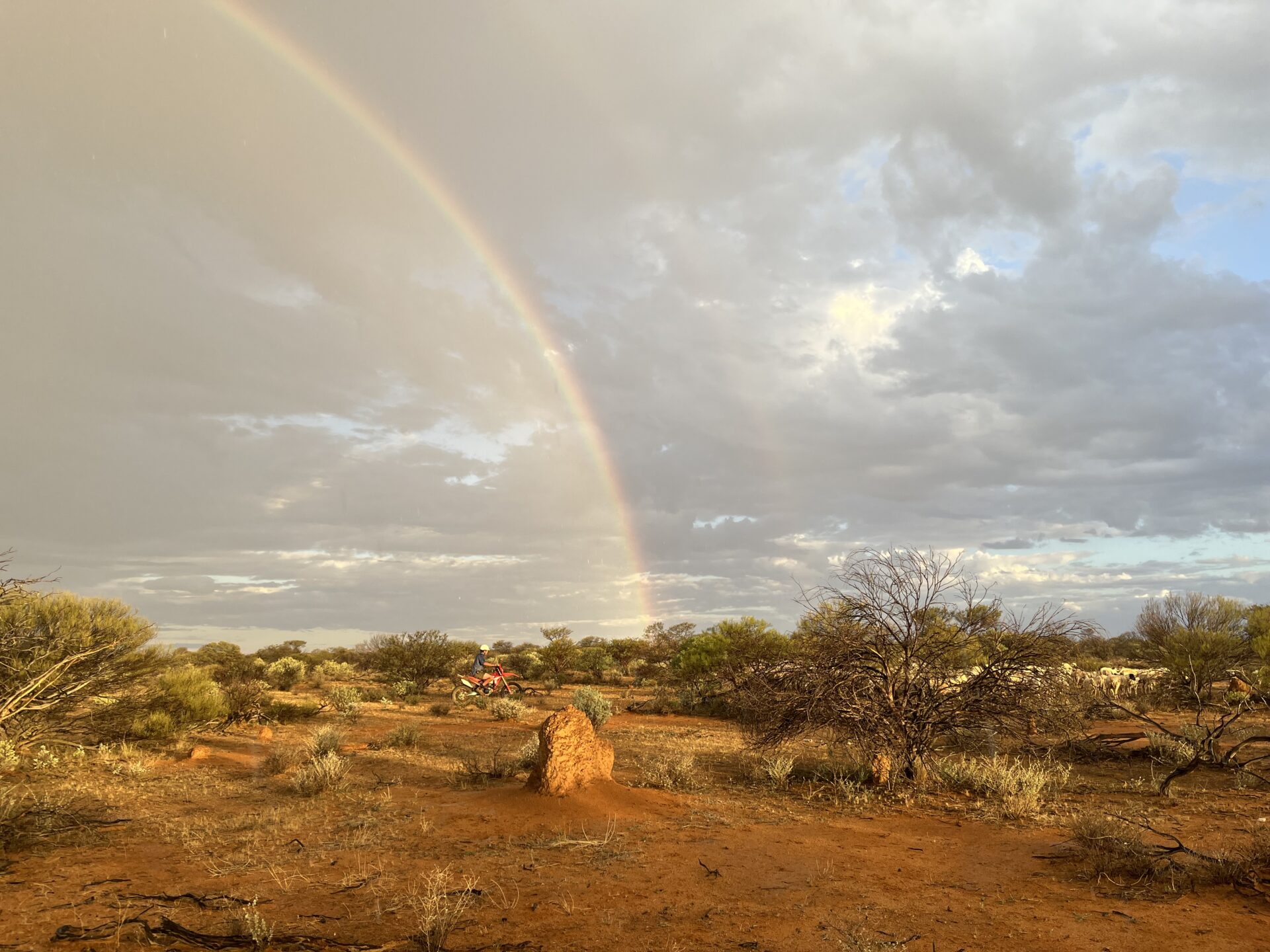Units generated:
ACCU
Purchased by:
Commercial in confidence
Project proponents:
Australian Integrated Carbon
Land management activities:
Rotational grazing, management of feral animals.
Verification doc
ACCU Project and Contract Register

Western Australia
Active
210,563 tCO2-e
Units generated:
ACCU
Purchased by:
Commercial in confidence
Project proponents:
Australian Integrated Carbon
Land management activities:
Rotational grazing, management of feral animals.
Verification doc
ACCU Project and Contract Register
Station life for the Foulkes-Taylor family hasn’t really changed since starting their carbon project five years ago. It’s just become more focussed and intentional, according to Rossco and Emma, the third of four generations to manage the 130,000 hectare Yuin Station, in the southern rangelands of Western Australia. The Foulkes-Taylors have owned and operated Yuin Station since 1928; with Rossco and Emma now managing alongside their son, Thomas and his family. Rossco’s father Michael also still lives on the property and helps out where he can. They have reduced stocking numbers from 6000 head of dorper breeding ewes to around 2000-2500, ramped up rotational grazing and were the first station in the region to complete self-funded wild dog and feral-proof boundary fencing.
The Foulkes-Taylor’s original motivation to consider carbon farming was the ability to access another source of revenue for the station by being rewarded for significant land rehabilitation practices.
“We had diversified into contracting considerably already, and we were having trouble with wild dogs, so we looked into carbon farming and could see that it fit with our own future plans for the station,” Emma said.
Rossco admits they weren’t instant converts and had their reservations as to how real the proposed forecasts and outcomes would be.
“It takes time to build that confidence but we’re five years in now and I’d say our motivations have definitely shifted – the income is secondary to the other aspects we now want to show from this project,” Rossco said.
“The income is important but now we feel it is more important to demonstrate the integrity and authenticity of the outcomes that are possible through these activities.”

As the third and fourth generations on this station, it was important to everyone that the management decisions remained with the Foulkes-Taylors.
“We decide how best to meet the requirements on the station; but we’ve definitely had to rely on our carbon project partners to get us through the auditing process,” Rossco said.
“I would say trust and relationships are critical to making these projects work – so make sure you invest the time to find the right partners and business model you want.”
Emma also recommends documenting everything you do on the station. “We were lucky that we have good historical management records here – but if you’re considering entering a project, start pulling together records and document everything you do – fencing, infrastructure, livestock management, shearing dates… it’s all important.”
Rossco said it’s really not that different to other business decisions you make on the property. “It’s a relatively big up-front commitment and I think a level of healthy reservation is important. We don’t forward sell and we don’t go into debt in the hope of some future payment – that’s been our conservative business principle for some time and it hasn’t changed with this opportunity. The one frustration – but it’s probably the same for much of the ag sector – is having to hope the world and national commitments and policies persist.”

“We know we can deliver at our end but the uncertainty comes from changing policy and political shifts; which doesn’t help build trust or confidence.”
The Foulkes-Taylors’ favourite outcomes of the project haven’t officially been measured or recognised in the formal reporting of the project, yet. Both Emma and Rossco said seeing the native grasses and shrubs return; as the water has slowed and stuck around are among their top outcomes.
“It’s mostly anecdotal at the moment but a couple of years ago we had the biggest downpour we’d had for a while and seeing the water pool in parts of our property compared to how it would run off and erode areas 15 years ago… that resonates,” Rossco said.
Yuin Station is in the Yalgoo bioregion and Tallering subregion; a high-biodiversity area, with open woodlands of acacia and a huge variety of shrubs in the southern rangelands of Western Australia. In ecology terms, it’s also considered a transitional region, an interzone between the Mediterranean climate of south-west WA and deserts of Central Australia.
The property is surrounded by a combination of conservation zones and pastoral station leaseholds. It’s also home to a number of threatened and at-risk plant and animal species.
“We’d like to take the next steps and start properly measuring the biodiversity impacts and even the benefits to some of the threatened species we’re seeing. We know others doing similar projects have started to measure and value these outcomes, so we’re keen to explore ways of doing this,” Emma said.

As vocal advocates for landscape rehydration, Emma and Rossco are hoping to see it further incentivised by becoming an eligible activity for future rangeland carbon projects under the proposed Integrated Farm and Land Management (IFLM) method.
“Depending on what the final version of IFLM becomes, we’d consider transitioning if it means we can start valuing the additional landscape improvements we’re experiencing. It would be worth getting pretty excited about, if we’re able to measure all the woody vegetation and soil improvements we’re generating.”
Yuin Station is about to undertake its first five-year audit. Their carbon project manager AI Carbon has undertaken LIDAR mapping across the whole project area and spent the past nine months doing several on-ground field visits and ground-truthing.
“I’m looking forward to seeing what that reveals,” Rossco said.

Lead Contact
Adam Townley
Chief Executive Officer
Address
Level 2B, Building C/114, 120 Old Pittwater Road, Brookvale NSW 2100